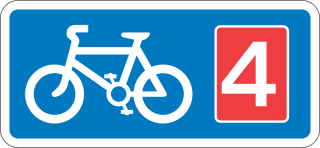Related Research Articles

Worcestershire is a ceremonial county in the West Midlands of England. It is bordered by Shropshire, Staffordshire, and the West Midlands county to the north, Warwickshire to the east, Gloucestershire to the south, and Herefordshire to the west. The city of Worcester is the largest settlement and the county town.

Droitwich Spa is an historic spa town in the Wychavon district in northern Worcestershire, England, on the River Salwarpe. It is located approximately 22 miles (35 km) south-west of Birmingham and 7 miles (11 km) north-east of Worcester.

Hereford and Worcester was an English non-metropolitan county created on 1 April 1974 by the Local Government Act 1972 from the areas of the former administrative county of Herefordshire, most of Worcestershire and the county borough of Worcester. An aim of the Act was to increase efficiency of local government: the two counties are among England's smaller and less populous counties, particularly after the same Act transferred some of Worcestershire's most urbanised areas to the West Midlands.

Malvern Hills is a local government district in Worcestershire, England. Its council is based in Malvern, the district's largest town. The district also includes the towns of Tenbury Wells and Upton-upon-Severn and a large rural area covering much of the western side of the county, including numerous villages. The district is named after the Malvern Hills, which are a designated Area of Outstanding Natural Beauty.

Wychbold is a village in the Wychavon district of Worcestershire. The village is situated on the A38 between Droitwich Spa and Bromsgrove, and by Junction 5 of the M5 motorway.

The Birmingham to Worcester via Kidderminster line is a railway line which runs from Birmingham Snow Hill to Worcester via Stourbridge and Kidderminster in the West Midlands, England. It is one of the Snow Hill Lines, with trains operated by West Midlands Trains and Chiltern Railways using a variety of rolling stock including Class 172 and Class 168 diesel units. It is a future aspiration of Network Rail to electrify the entire line, as well as the Chiltern Main Line to London Marylebone.

The Celtic Trail is a network of dedicated cycle routes in the National Cycle Network, crossing West, South and Mid Wales, and covering 377 miles in total. It is divided into east and west sections. The west section links Pembroke and Fishguard on the west coast to Swansea, and the east section covers the area from Swansea to Chepstow, Abergavenny and Hay-on-Wye in the east. It is largely traffic free but sections along the route are still being upgraded and improved. In some places there is a choice of a low-level route, or a high-level route for mountain bikes.

Droitwich Spa railway station serves the town of Droitwich Spa in Worcestershire, England. It is located just to the south-west of Droitwich Spa Junction of the Worcester to Leamington Spa Line and the Worcester to Birmingham New Street line. The station is managed by West Midlands Trains, who also operate all trains serving it.

Worcester Foregate Street, opened by the Great Western Railway in 1860, is one of two railway stations that serve the city of Worcester, England; the other is Worcester Shrub Hill, which is located to the east. A third station, Worcestershire Parkway, is sited just outside of the city to the south-east. The station is managed by West Midlands Railway, who also operate services along with Great Western Railway.

The Birmingham to Worcester via Bromsgrove line is a railway line in the West Midlands of England connecting Birmingham to Worcester via Bromsgrove. The most notable feature on the line is the Lickey Incline, between Barnt Green and Bromsgrove.

National Cycle Route 4 is a route of the United Kingdom National Cycle Network, running from London to Fishguard, Pembrokeshire. Between these, the route runs through Reading, Bath, Bristol, Newport, Swansea and St David's. Within Wales, sections of the route follow branches of the Celtic Trail cycle route.

National Cycle Route 5 is a route of the United Kingdom National Cycle Network, running from Reading to Holyhead.
National Cycle Route 6 is a route of the United Kingdom National Cycle Network, running from London to the Lake District.

First Midland Red Buses, trading as First Worcester, is a bus company operating services in Herefordshire and Worcestershire in the English Midlands. It is a subsidiary of FirstGroup, and is managed as part of the First West of England business unit.
The Newport, Abergavenny and Hereford Railway was a railway company formed to connect the places in its name. When it sought parliamentary authorisation, it was denied the southern section, and obliged to use the Monmouthshire Railway between Pontypool and Newport.
The Worcester and Hereford Railway started the construction of a standard gauge railway between the two cities in 1858. It had needed the financial assistance of larger concerns, chiefly the Oxford, Worcester and Wolverhampton Railway, and the Newport, Abergavenny and Hereford Railway. It opened its line progressively from 1859 to 1861, delayed by exceptionally difficult tunnelling at Colwall and Ledbury. The company was purchased by the West Midland Railway in 1860, and that company amalgamated with the Great Western Railway in 1863.
References
- 1 2 "Herefordshire's rural cycle network" (PDF). Worcestershire cycling and walking guides. Retrieved 10 September 2024.
- ↑ "Route 46". Cycle Malvern. 20 December 2020. Retrieved 10 September 2024.
- ↑ "Malvern to Worcester cycle route plans". Sustrans . Retrieved 9 September 2024.
- ↑ "Routes". Cycle Malvern. 27 January 2008. Retrieved 10 September 2024.
- ↑ "Abergavenny to Hereford". Rambling Fat Man. Retrieved 10 September 2024.
- ↑ "Herefordshire's rural cycle network" (PDF). Herefordshire walks and cycling maps. Retrieved 10 September 2024.
- 1 2 3 "Heads of the Valleys Overview". cycle.travel. Éditions Système D Ltd. Retrieved 10 September 2024.
- ↑ Chris Barber (2023). Gwent Industrial Heritage. Amberley publishing ltd.